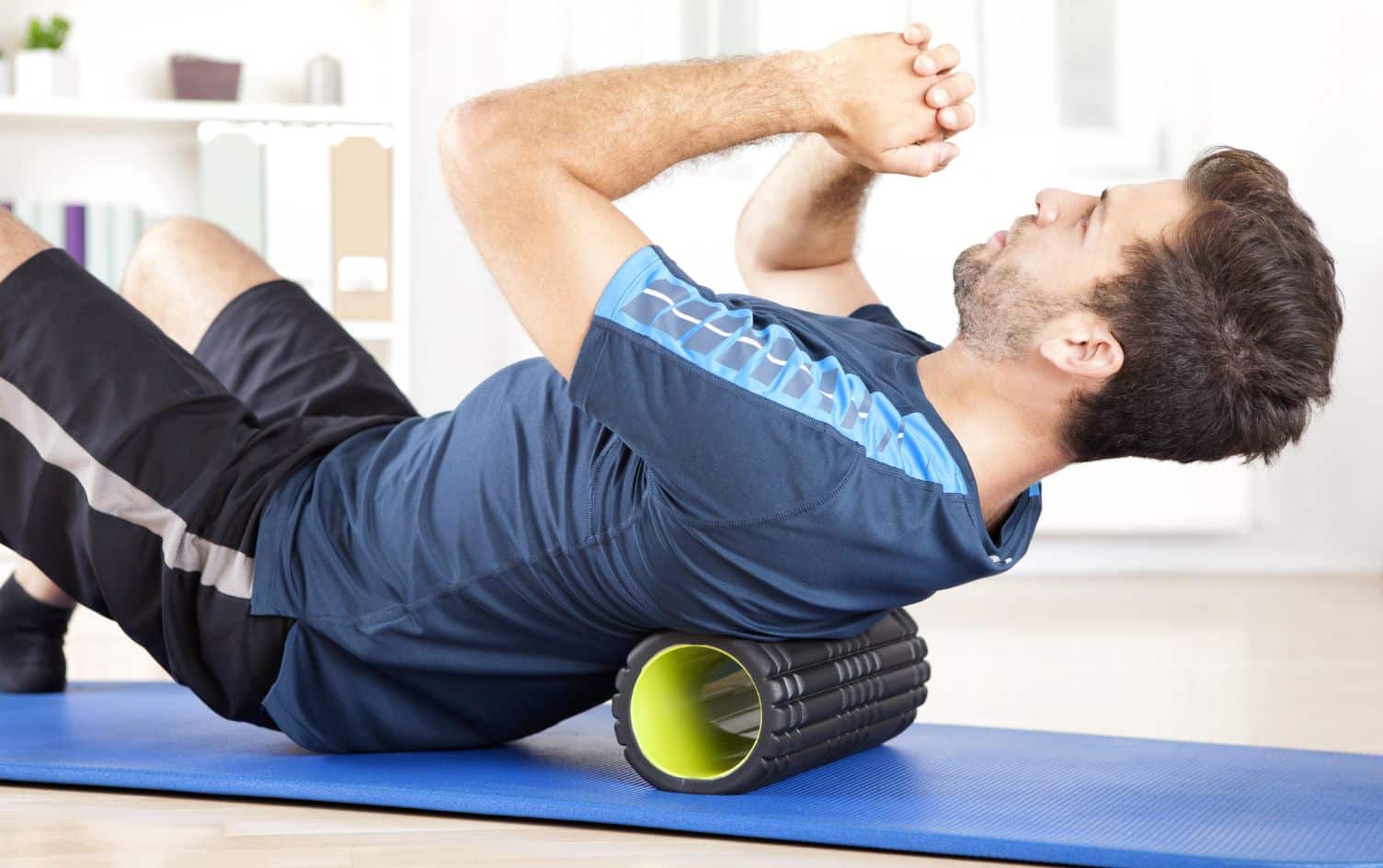Many people believe a recovery routine is only for dedicated athletes. But, according to fitness experts, that’s just not true. “All people exercising, training, competing or just beginning to implement physical activity into their lives can benefit from a variety of recovery tools, regardless of their goals,” says Erika Lee Sperl, a certified strength and conditioning specialist.
A recovery routine can help prevent injuries, allow for cellular repair, provide a mental break, and help you become stronger, faster and more mentally and physically sound, Sperl says. But what does “recovery” mean, exactly, and how can you create a routine of your own? Answers, ahead.

“Before you go diving into an ice bath or buying a massage gun, it’s important to understand what recovery really is,” says Ian Elwood, a certified strength and conditioning specialist and founder for MissionMVMT. “Recovery is the period of time after a workout when your gains are actually made.” When you exercise, you put your body under “stress.” It’s a good type of stress, but your body still needs time to adapt to it. “The purpose of exercise is to create an opportunity to recover from it.”
That’s when all the parts of your body and mind that are stressed by exercise have a chance to repair themselves — think: muscle fibers, energy systems and even your mental stamina. What’s more, they get stronger via the repair process. (Provided you’re not overdoing it with exercise.)
“Just as exercise is essential for yielding improved physical capabilities, recovery is equally as important for allowing the body to repair, rebuild and respond to the demands and the stresses of its environment,” explains Mike Clancy, a certified strength and conditioning coach.
The most common form of recovery is taking time off from exercise, such as on a rest day.

“Mandatory rest days are a controversial topic,” Elwood says. Some people look forward to their days off, but others find it hard to intentionally slow down. While Elwood won’t go as far as to say rest days are necessary, he does think taking time to rest and recover is very important.
Ultimately, it comes down to your individual goals and preferences. But there are some guidelines that can help you choose the number of rest days per week that feel right for you, as well as when to take them.

“The ideal time for a rest day is dependent upon training goals, training age (or how long you’ve been working out), fitness status, current training schedule, upcoming competitions, and the often hard to grasp concept of ‘listening to your body,’” Sperl says. “It may be one day of complete rest, one active recovery day or multiples of each. It all depends on your training demands and goals.”

For most people, a 2 or 3-on, 1-off schedule works well. “This means you train for 2 or 3 days, then take a rest day,” Elwood says.
Unless you’re a professional athlete or have the ability to build your life around your training schedule, it may make sense to schedule your rest days on your busiest days of the week, Elwood says.

If you don’t like taking total rest days, try active recovery days. “Active recovery involves low-intensity movements and activities that promote blood circulation, soreness reduction and repair of the body without taxing or stressing the tissues to the point of fatigue,” Clancy explains. That might mean taking a long walk, lightly stretching, getting a massage, or playing a low-intensity sport.

Use metrics to inform scheduling (if you have access to them). For more advanced exercisers, using metrics like heart rate variability may help you figure out whether you need a rest day or not. But this is a more complicated approach, so it’s not necessary unless you have this information readily available and enjoy tracking it.

“Oftentimes, a lack of motivation or concentration can also be your body’s way of telling you it’s time to kick up your feet for a day or two,” says Lauren Seib, a certified personal trainer. “Listen to what your body is telling you!”

Most importantly, your recovery routine should be personalized, Sperl says. “Everyone trains differently: different activities, intensities and purposes. We don’t all have the same recovery needs, access to tools or injury history,” she adds. “These should all be taken into consideration when developing an individualized recovery routine.”
It might seem like you need a bunch of fancy tools to implement a solid routine. High-tech devices like vibrating foam rollers and percussive therapy guns can help, but they’re not necessary, Sperl says. “The three most important components of recovery are nutrition, sleep and the musculoskeletal system.” Here’s how to cover your bases.
Nutrition: Instead of subscribing to a specific diet, Elwood recommends focusing on replenishing fluids, protein and carbohydrates in order to recover adequately.
Sleep: Practicing basic sleep hygiene, like getting 7–8 hours per night and sleeping in a cool, dark room, can ensure your body gets the time and rest it needs to repair.
Musculoskeletal system: Practices that work on your musculoskeletal system don’t move the needle as much as sleep and nutrition, but they can be helpful, Elwood says. Methods like mobility work, self-myofascial release (such as foam rolling), saunas, electrical stimulation, and even massage can help your body feel its best.




